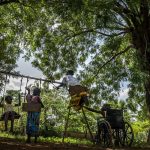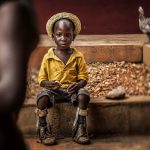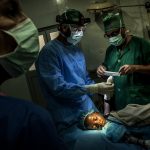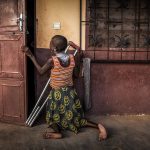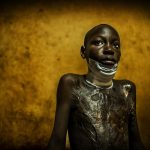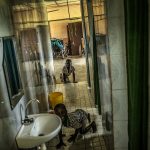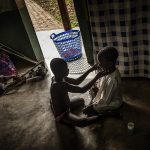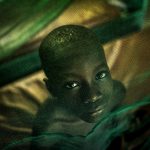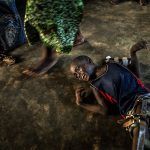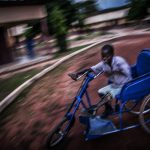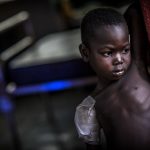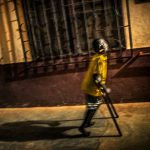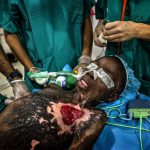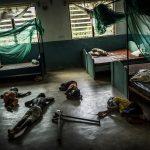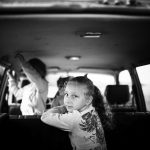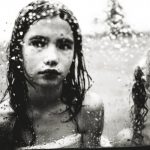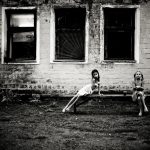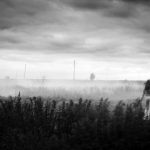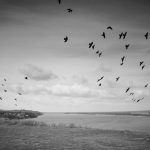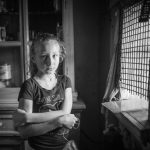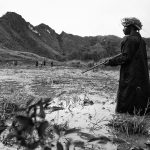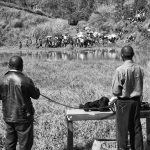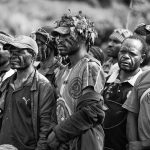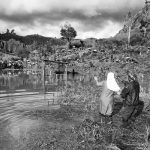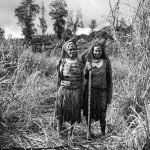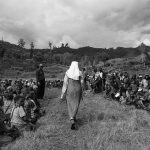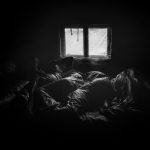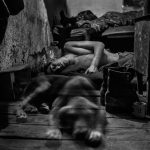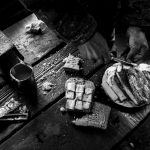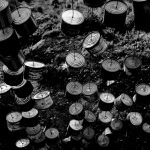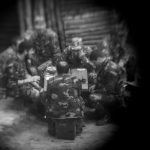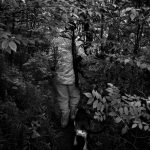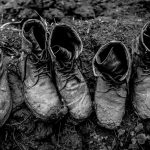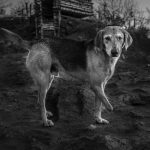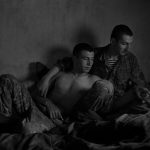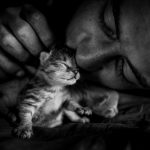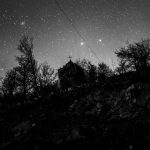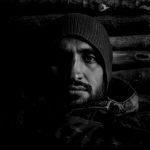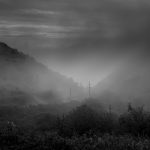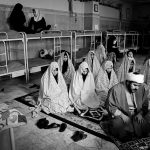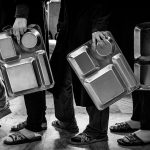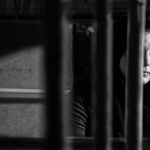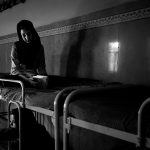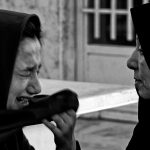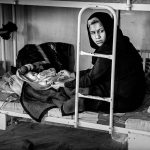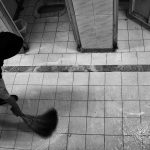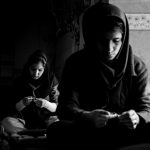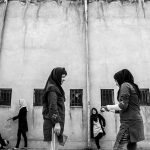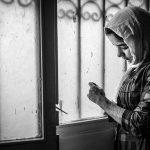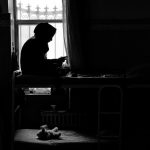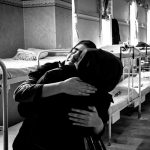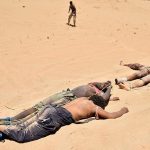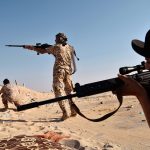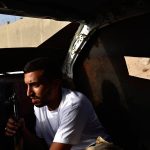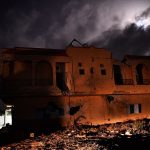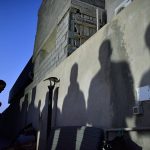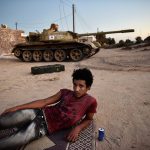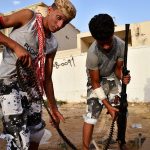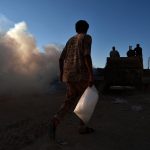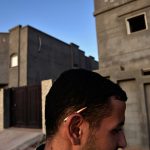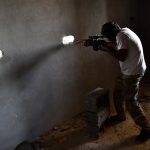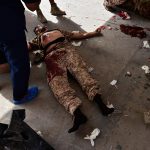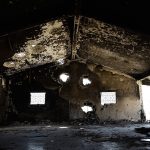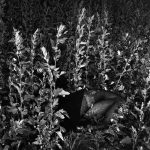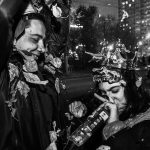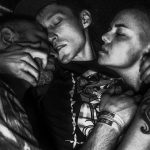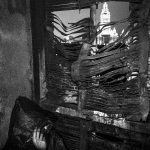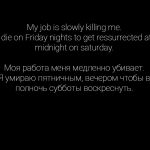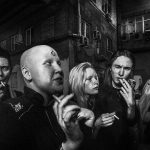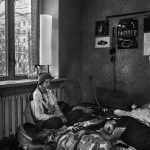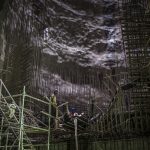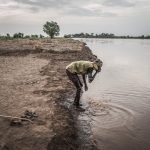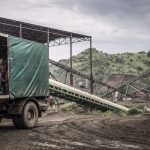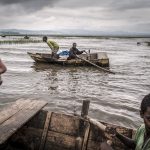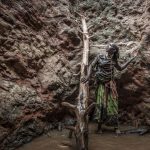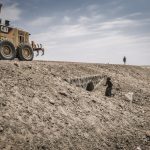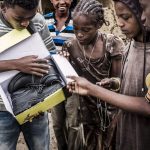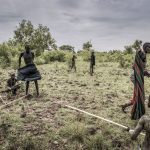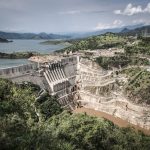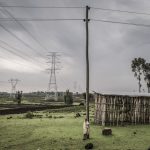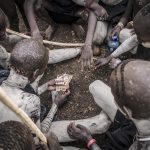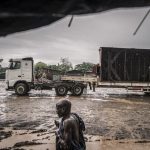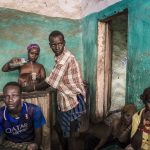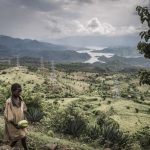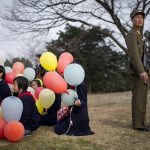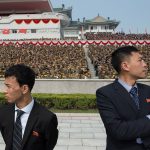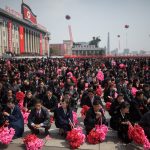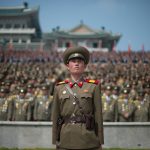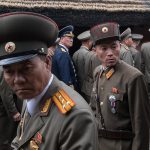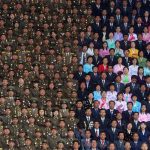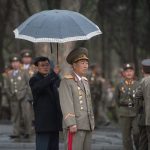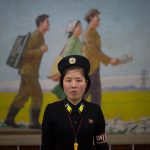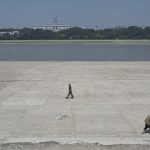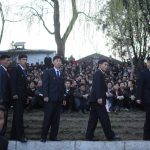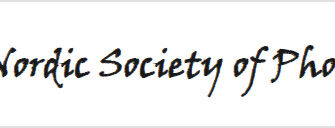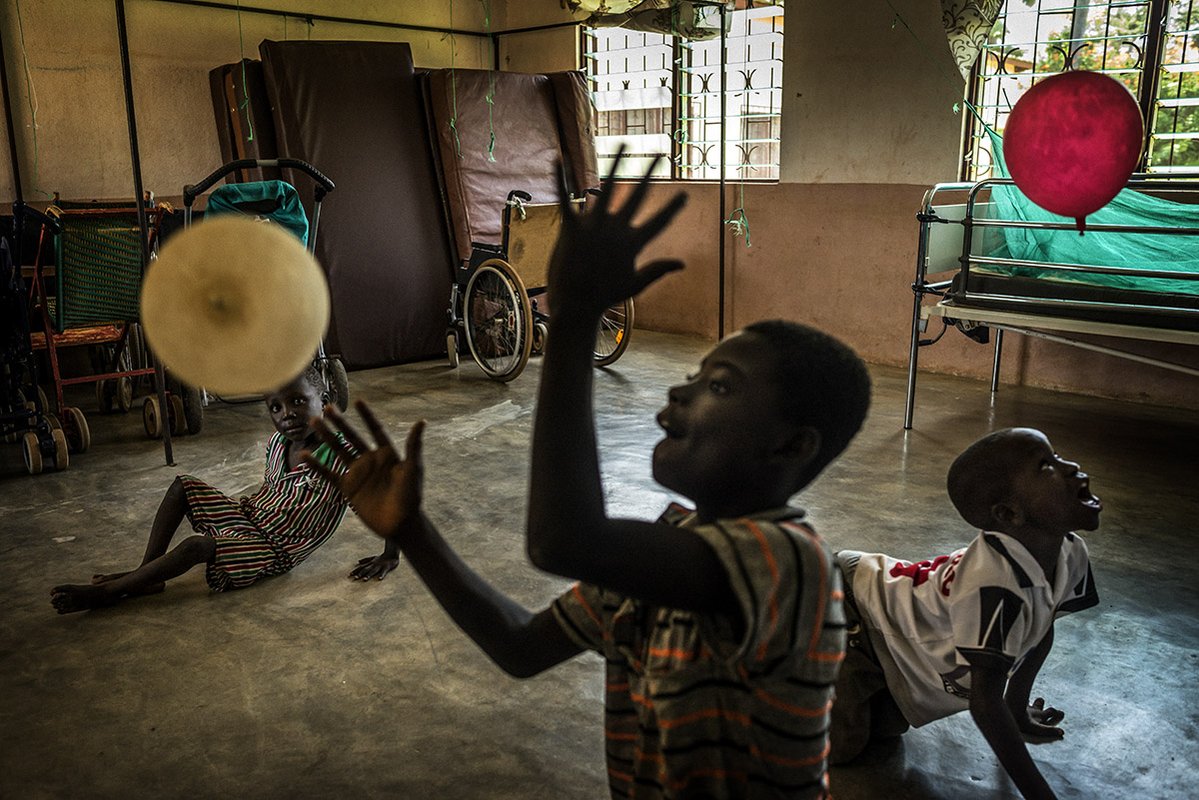
© Antonio Aragon Renuncio
1 Place Compromise
Heat, sun and illness. All I see is bodies roaming the Savannah in search of food, shelter and survival, but all there is, is stones and more stones. More than ten years have passed and thousands of patients by the committed doctors from our NGO OASIS at Saint Louis Orione Center in Bombouaka, the home to about 70 children mostly in neglect- with severe and profound physical and intellectual disabilities. Ten, fifteen or thirty expeditions I’ve lost count. To bring medical attention (traumatology and plastic surgery/reconstructive surgery) to the children of this forgotten country The countless wounded and disabled resemble beasts. Deathly African pathologies. Hours and hours of work in the operating room. Mutual suffering both alien and heartfelt fill the harsh, rocky and inhospitable plains. Sands. Red. Covered in blood. Thick. Sweet and red. And there it was, amidst a gazillion pages in the dictionary, the big, bold T of trauma. Trauma: a lasting injury from a generally external mechanical agent. Emotional shock that causes lasting damage to the unconscious. Negative emotion, strong and lasting impression. Now I have discovered a new synonym. One that defines the emotions I continuously feel when I look into my Nikon journal. Club feet, deformed, twisted and burned. Mutated arms. Rotting legs and exposed bone. Putrid air fills my lungs. Exposed membranes. Exploding tumors. Cleft lips. Everyone, everywhere crippled and maimed. Whole regiments. Long days. Beautiful nights. Mosquitoes. Sick people. More mosquitoes. Wounded and disabled. Children with disabilities (especially girls) and high risk of physical, emotional and sexual abuse. Abandoned by their families. There is a perception on the part of their communities that the incapacities are due to a divine punishment, the result of the sins committed by the parents, of an act of the devil, or that the child is a sorcerer. These minors are considered “supernatural”, “strangers” or “demons”. In some areas, children with cerebral palsy are known as “snakes”, as they lie on the ground. These little ones are drowned in the river in rituals “for the serpent to leave” Why would I come back? To Africa? To Togo? To a region that social welfare indicators place at the bottom of the planets human development index? To a country that it was also considered the least happy on the planet according to the UN World Happiness Report? You ask absurd questions. I know. You know and He knows. There are things in life that exist only because without them our lives wouldn’t be so fucking amazing. Live your life and live it well. Compromised. Limitless. Without regrets. As our beloved Africa. The real Africa; the one that hurts your throat as you try to swallow. The one made of pain, friendships, solidarity, and grief. The Oasis. Africa. Six Letters. One after another. Ten years. One after another Tic-Toc, Tic-Toc. Times flies. Life goes on. You either lead your own life or sit back and let it pass right by you. The Africa that once seduced you from within, from the depths of your soul. We cannot deny it, we should not want to deny it. Let alone forget. Oasis Full of joy Compromise Hidden smiles Pretty light.

© Yuri Pritisk
2 Place Compromise
The series of genre portraits shows two girls of 8 and 10 years. They are friends, who are not sisters by birth, but nevertheless consider themselves relatives. People around say they are not sisters, but the girls do not agree with the opinion, they are united by their life, faith, friendship, and love. They’ve found common language, mutual understanding, emotional connection, and although they don’t look alike, they feel and understand each other like relatives do. Their primary power lies in that.
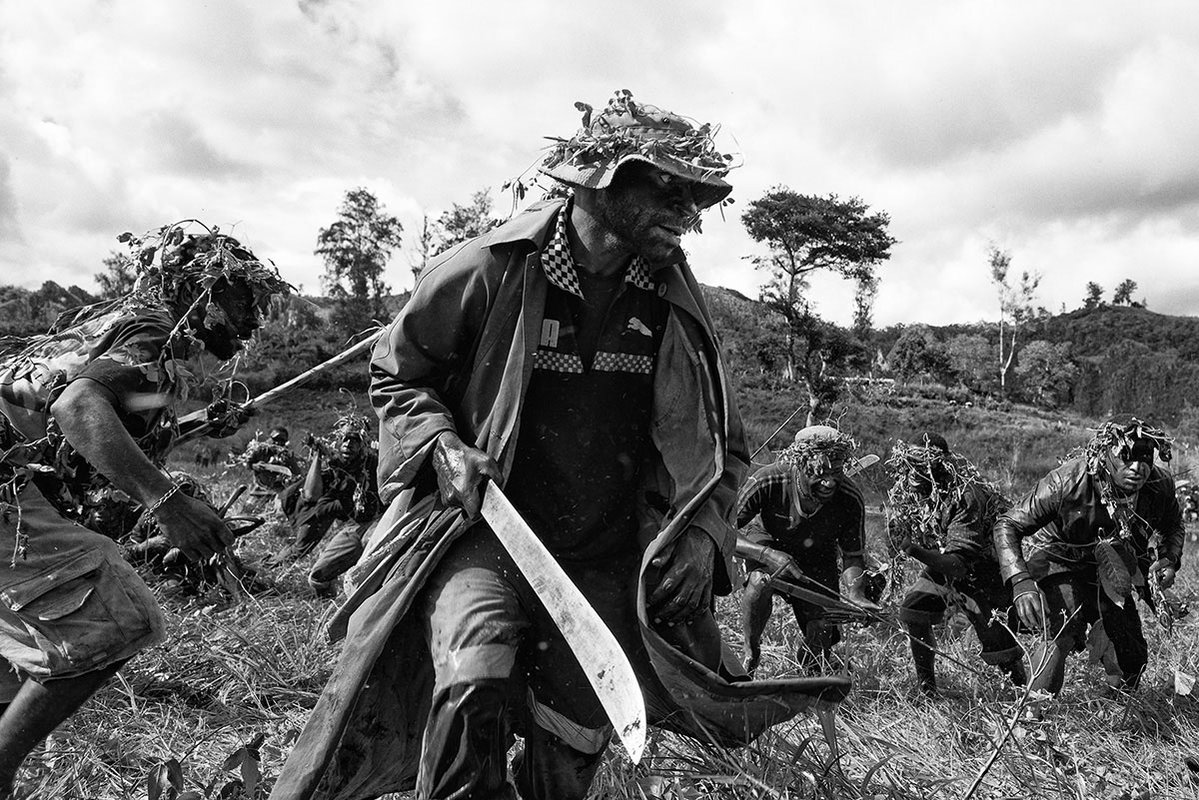
© Bettina Flitner
3 Place Compromise
Papua New Guinea is supposed to be one of the most dangerous countries in the world. There are always wars and conflicts between the tribes. Someone from a different tribe can be shot only because he has trespassed the land of another tribe without permission. Sister Lorena, a catholic nun, who lives since 30 years in the Southern Highland of PNG, is working a a mediator between hostile tribes. She is involved into peace negotiations between two villages Upa 1 and Upa 2, who have been fighting since several years with nine deaths. For the peace ceremony, the two villages met at a high plateau, there is a lake in between them. After the negotiations with megaphones over the lake, each side perform a reenactment of the war.
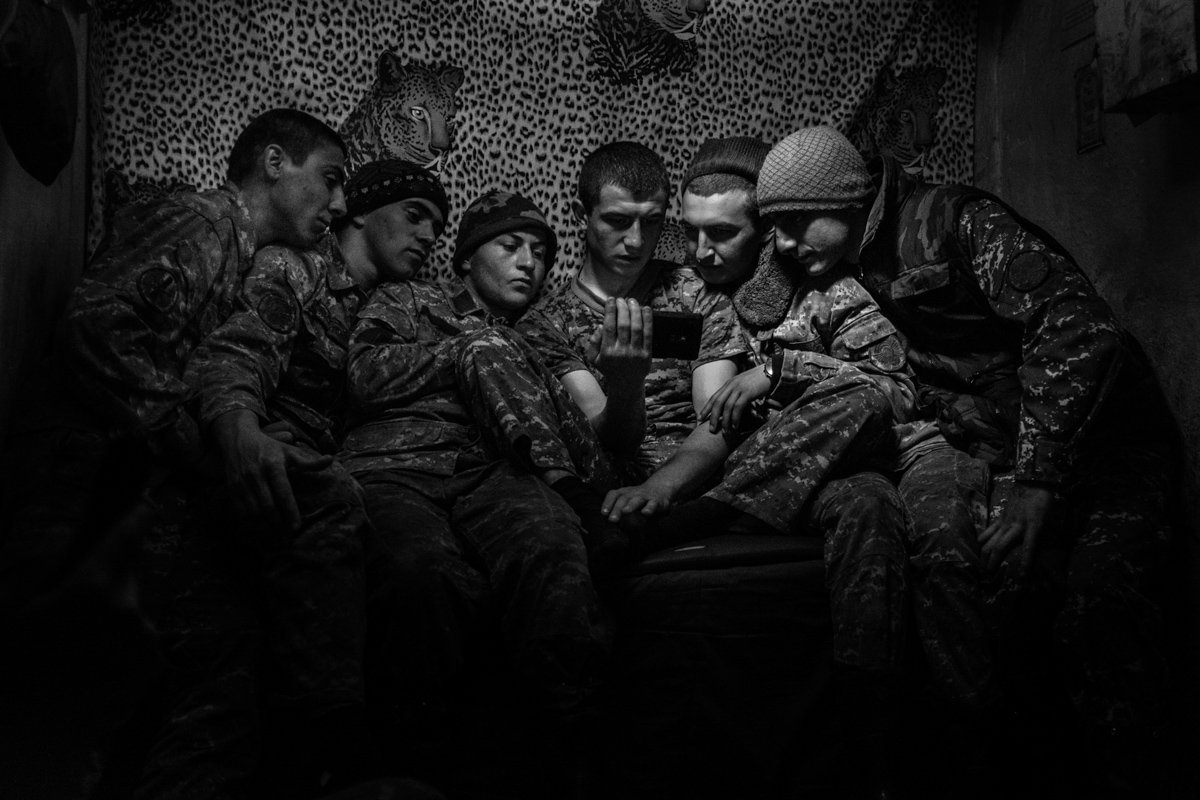
© Areg Balayan
1 Place Conflict
For the past 11 years I have lived in Stepanakert, the capital of unrecognized Nagorno-Karabakh Republic, with my wife and two children. On April 2nd, 2016, the military conflict that brought the republic to life started again. Same day I was drafted as a private into Karabakh Defence Army and placed at the most distant border outpost. On that day I died: died as a person, as a photographer, as a citizen… I accepted the thought that I wouldnt exist in this world anymore. I turned into a tiny spot next to nothing. I hardly thought about home in the beginning, almost forgot about it. It was the only way not to go insane. I had to defend the outpost, and survive. Period. And then I found the way out from this inhuman situation, maybe the only way: I started to live for the sake of my younger brothers-in-arms, 18-years-old conscripts. This is the point where Id regained myself the small spot that I became started to grow. I had no choice between the rifle and my camera it was my duty to hold Kalashnikov. And still I was taking photos. These images tell the tale of my journey, from photographer to combatant and to photographer back again.
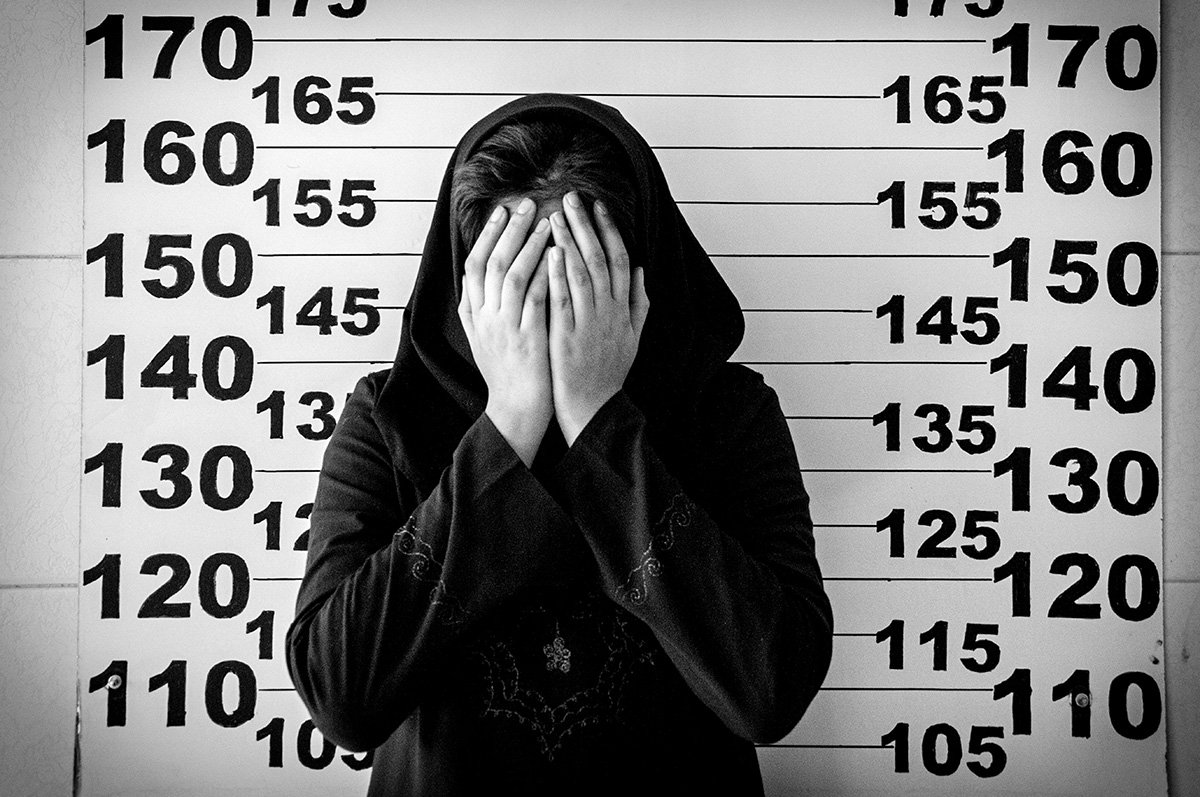
© Sadegh Souri
2 Place Conflict
In Iran, death penalty is given to the children for the crimes such as murder, drug trafficking, and armed robbery. According to the Islamic Penal Law, the age when girls are held accountable for their crimes is 9 years old, while the international conventions have banned the death penalty for individuals under 18. Pursuant to the passing of new laws in the recent years, the Iranian Judiciary System detains children in Juvenile Delinquents Correction Centre after their verdict. Those with minor crimes are freed after spending their term and those who are sentenced to death are hanged after reaching 18 if the next of kin (private complainants) do not take back their complaints. At the time of the shooting, some girls were waiting for their execution. However, some of the next of kin (private complainants) withdrew their complaints and some of the girls were freed. They are living their normal life now. And this project still continues.
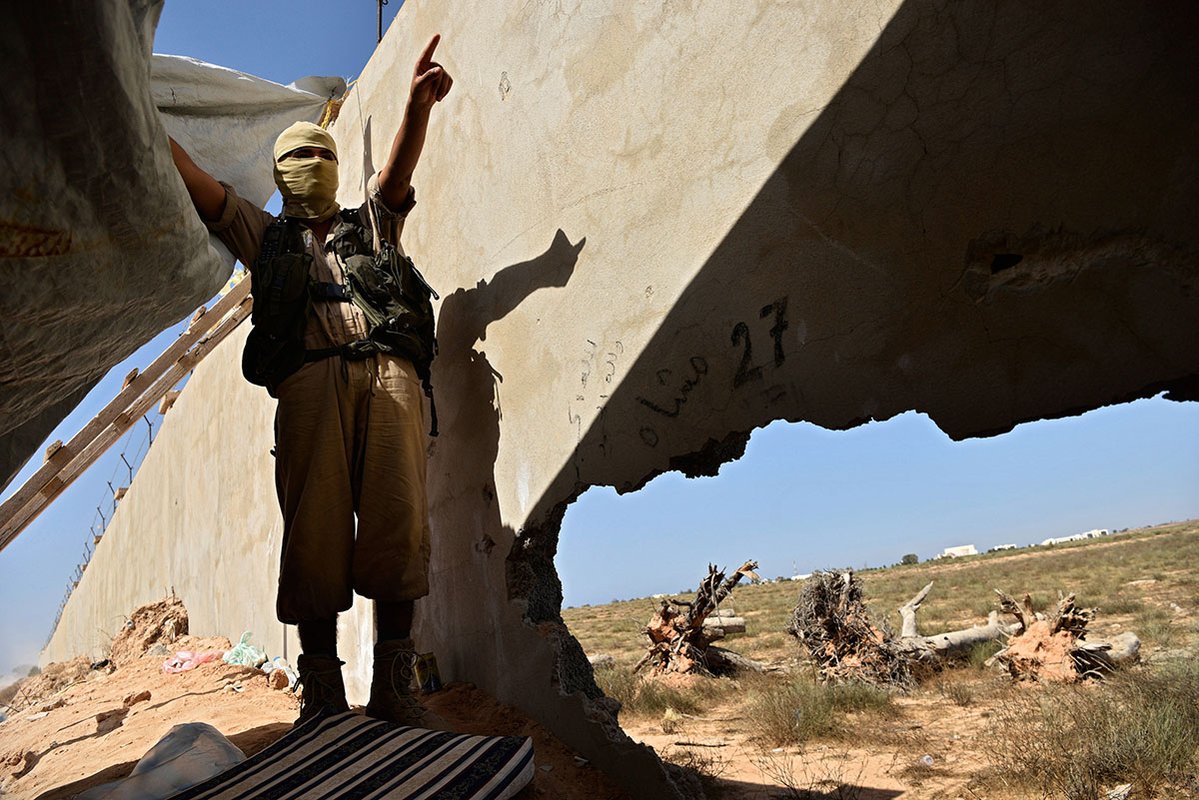
© Stanislav Krupar
3 Place Conflict
In the spring of 2016 the Misrata militias backed by local businessmen and the Government of National Accord (GNA) started an offensive against the Islamic State of Iraq and the Levant (ISIL) in the region of Sirte in Libya. First easy victories turned immediately into long lasting bloody fights when the ISIS used the town of Sirte as a fortress full of snipers and traps. Misrata troops – badly trained and equipped – lost 2500 men before Sirte was finally liberated in December 2016. But it is hard to celebrate it as and of fighting as Libya is deeply divided failed state where the one victory opens just new endless battles.
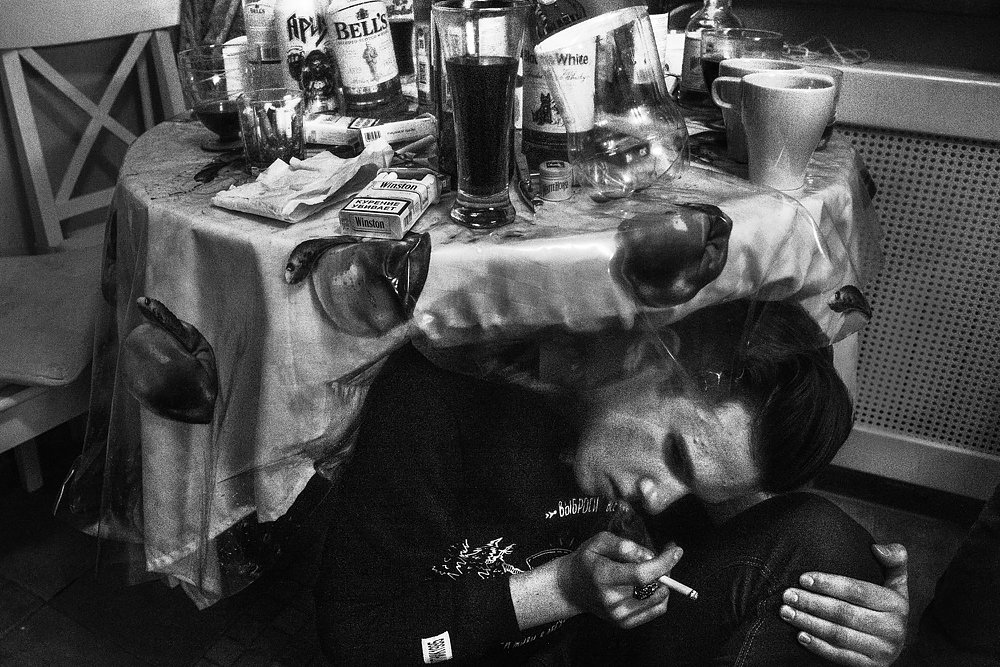
© Arnold Veber
1 Place Problem
Social, cultural and political apathy within Russia during 2014-2015 became the cause of paradoxical “ambivalence” of the youth. They chose to leave societal emptiness, personal issues and failure to solve them behind, and get blackout wasted instead. “Last Night I’m Done” – is a creed, motto, confession, repentance, and promise of a generation forced to live in the moment.
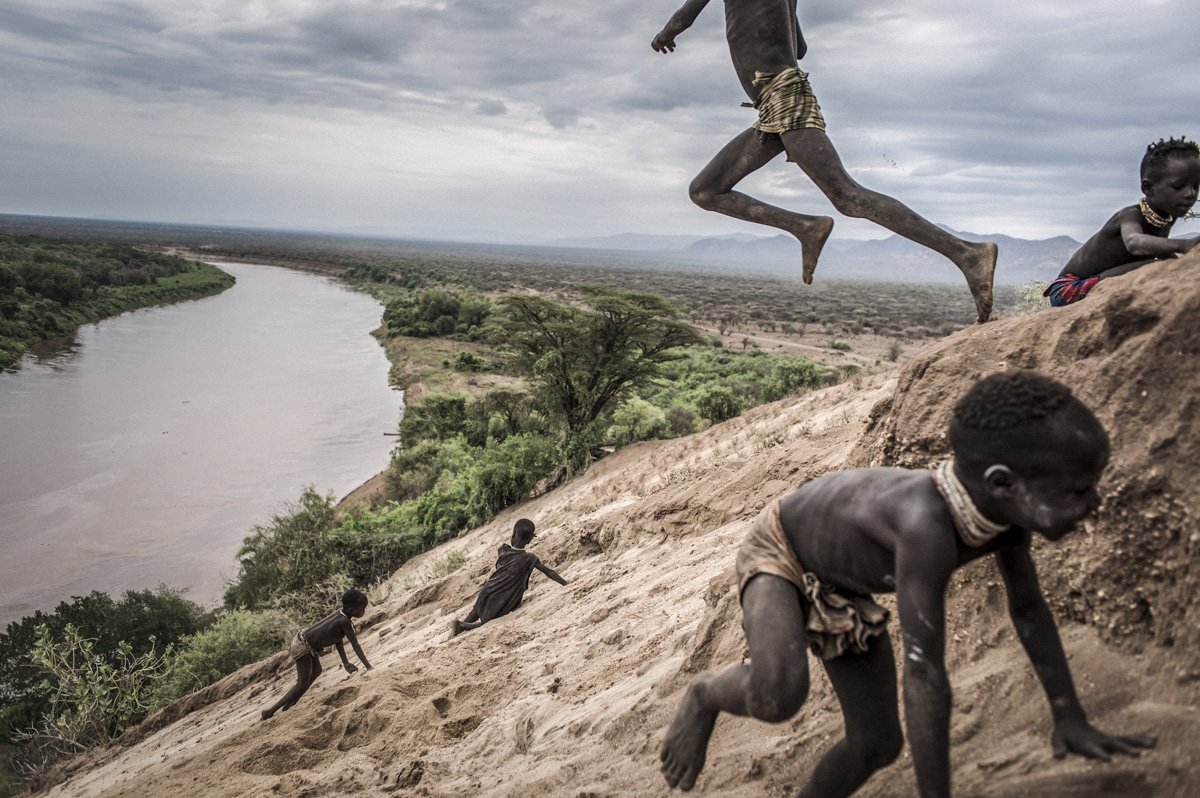
© Fausto Podavini
2 Place Problem
Ethiopia is a country in the central part of Africa that is suffering one of the biggest and quickest economical and industrial develop of the whole African continent. A develop average in the last 10 years of 10.8% (World Bank data) made Ethiopia the fourth economic power in Africa after Nigeria, South Africa and Angola. The populous country of the Horn of Africa, almost reaching the 100 million inhabitants, is developing fast and its goal is to become a medium income nation within the next 10 years. Between 2014 and 2015, GDP increased by 10.6% due also to the foreign investors who thanks to the development projects of the last years made by the Government, are changing the aspect of this country. One of the most impacted area if the Omo Valley. Crossed by the homonym river that starts in the Ethiopian mountains, the Omo Valley has an archeological and naturalistic relevance. This area is internationally known as a rare dry and semi-dry region with an extraordinary biodiversity, to the point that since 1980 the Omo Valley has been included in the list of the UNESCO heritage sites. This area has approximately 500,000 inhabitants which work mainly in agriculture and sheep-farming. Alluvial agriculture is fundamental for the sustenance of the local communities and its made possible by the flooding that make the fields naturally fertile, giving food to approximately 100,000 people, divided in 20 ethnicities that cultivate almost 12,000hectars along the shores of the river. Being an extremely fragile area, the Omo Valley is inhabited by different ethnicities that were able to develop the agricultural system that works on a delicate and precious balance between survival of the human kinds and the usage of the natural resources. Sorghum plantations and corn, and beans in the alluvial clearings along the shores of the river, the alternately cultivation of the pluvial forests, and sheep-farming in the field that are caused by the flooding, allow, all together, to contrast every climate adversity, provide a fundamental contribution to the local economy. In 2010, the ex-Prime Minister Zenawi, who died in 2012 and replaced by the actual Prime Minister Desalegn, announced the construction of the biggest dam ever made in Africa. To start the construction of the Gibe III Dam, the Italian construction company Salini, received 4.8 billion euros. This investment is the biggest ever made in the whole African continent. Gibe III, in the final stage of construction at the moment, will be 240 meters high and will have a 1.870 MW power and will create a 150 KM long artificial lake. The construction of this dam has a double target; to produce hydro electrical energy to export in the neighboring countries (Sudan, Djibouti and Kenya) and stimulate the development of agriculture through the construction of a dense network of irrigation ditches that will allow to include the extensive crops which have a high economic value, such as cotton fields. Furthermore, controlling the Omo River, will allow to make a huge government project possible: the Omo Kuraz Sugar Factories Project, which sees the cultivation of approximately 245,000 hectares of land for the production of sugar cane, to be used to produce both ethanol and sugar. Italian and Turkish investments for the cotton fields, Chinese investments for the construction of new roads up until Kenya, are bringing a new economy and development in this country, radically changing its aspect. Some experts foresee strong environmental and social-economic impacts in the Omo Valley. The reduction of the flow of the Omo River will reduce the extension of the pluvial forest and the loss of biodiversity. These projects will also stop the natural floods, and the procurement by the government of parts of the land, will create new geographical borders between the different tribes, who will have less and less land to be used for agriculture and sheep-farming, changing the social assets of those tribes. These changes are already happening.
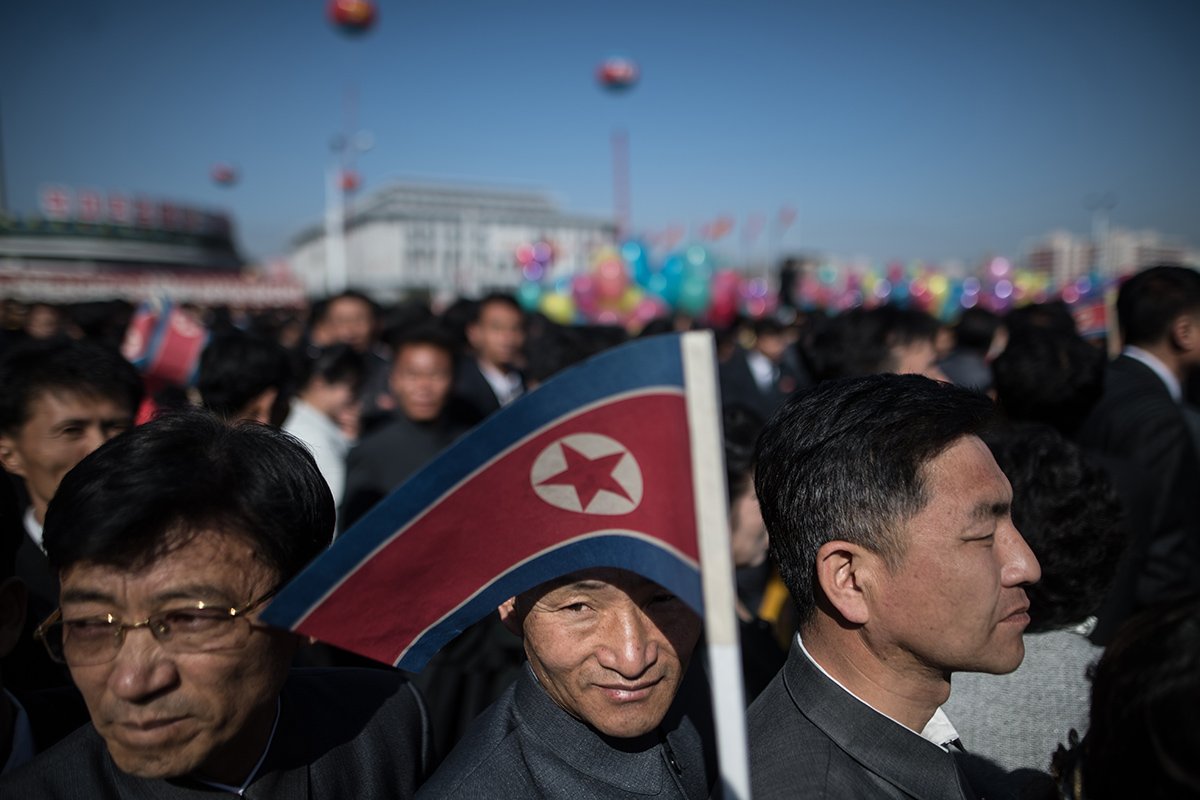
© Ilya Pitalev
3 Place Problem
For decades, North Korea remains the most closed territory on the world map. Three generations of the Kim dynasty retained power in the country that survived the deprivation, hunger and war. The world was swiftly changing around this small country, the communist regimes were collapsing. North Korea, which possesses nuclear weapons, is in endless confrontation with South Korea, the United States and Japan. The methods of governing the country can not be called democratic. Nevertheless, the regime is stable. The generation now living in the country has not seen and does not know another system. How long can you exist opposing yourself to the rest of the world? Will the Great Juche ideology experiment be completed?
Direct Look Photo Contest
Share:

